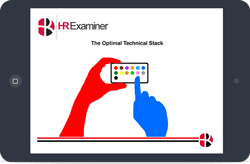
HR has spent its entire history in a cloister-like setting.
The skin is being peeled off of the contemporary organization. It hurts. It’s ugly. It’s inevitable. It goes at he pace of the market.
Illusions of control can be maintained when the walls are closed and hard. When everyone is a publisher, everyone is a critic. When everyone is a critic, there is a shortage of things to critique. What was hidden become revealed. Where there was modesty, we see behnd the fig leaf. Where there was privilege, we discover corruption.
In general, sunlight is a great disinfectant. But, as the thee walls of the organization become transparent, what happens behind the walls has too change. What other explanation could there possibly be for things like the Candidate Experience movement.
HR has spent its entire history in a cloister-like setting. Insulated from the market by its operational peers, the people who do Human Capital stuff never noticed the realities of the organizational ecosystem.
Today, both the insides and the outsides of the organization are upping their demands for quality, data and effectiveness from the HR Team.
The market wants workplace safety data from the supply chain’s operations. The supply chain people want to understand which standards matter.
The marketing people want demographics. They want to understand the overlaps between employees, customers and investors. They want to know how the next key recruit is going to impact the industry.
The sales people want hot leads. The product people want testers. The strategic planning council wants accurate workforce supply data. The facilities people want workplace environmental particulars.
The list is endless. What used to be a closed empire of control is morphing into a transparent data origination and publishing function. The limits of HR’s expertise and capacity are being stretched in multiple simultaneous directions.
Big Data and visualization are important because they are HR’s new key deliverables.
You can hear the intelligent grumbling of people who spend their hours jockeying spreadsheets. ‘How can we possibly do big data when getting payroll right is a Herculean task?’
Vendors’ smoke and mirrors about ingle sign on being the same as a single code base will start to be shown for what they are…heartless exploitation of customers who feel that they have no option. After three or four rapid firings of the HR people who can’t produce clean data, it will dawn on the C Suite that the problem is caused by vendors, not solved by them.
After a couple of rounds of the blame game, Naomi Bloom will be canonized. After years of hearing her preach about data structures, the chickens will be coming home to roost. Without clean data, HR will fast rapid irrelevance.
It will be a tough time for enterprise vendors to hold on to their accounts. Acquisitions that are very modestly ‘integrated’ produce dirty data. Meanwhile new providers of single stack real SaaS tools will be irresistible.
As HR leaves the cloister and enters the marketplace, it’s going to require strong allies and reliable support. The pressure to satisfy the organization;s needs (internally and externally) will speed up decision cycles. Just as the first generation of HR software is reaching functional maturity, a new set of pressures are emerging tht wll drive a change in HR;s focus.
It’s going to get interesting.











